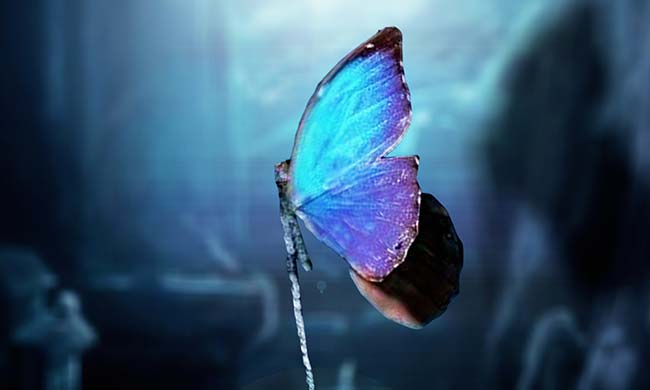
A collaborative process between Settlement Services International (SSI) and CuriousWorks saw the creation of a series of shorts films produced by a group of community-based asylum seekers that examine the refugee experience in Australia. Covering a wide spectrum of ideas, the films explore issues pertinent to the refugee experience, including life under oppressive regimes and finding joy in a country where they can feel safe.
Right Now spoke with two of the filmmakers involved in the collaboration, Hayder Shakir Al Bdairi and Mohammed Alanezi, along with SSI’s Arts and Culture Coordinator Carolina Triana.
Right Now: How did this film series collaboration between CuriousWorks and SSI come about?
Carolina Triana: An important component of the SSI Arts & Culture Strategy is establishing and maintaining relevant partnerships with community, arts and cultural organisations to develop and deliver its vibrant Arts & Culture program. In this context, SSI invited CuriousWorks to facilitate a series of grassroots workshops which introduced storytelling and filmmaking skills to new arrivals, supported by SSI’s Humanitarian Services programs.
Following an open call for participants, a group of 15 asylum seekers of varying skill levels joined the program. This group of young men came from countries such as Iran, Iraq, Afghanistan, Pakistan and Sri Lanka.
The workshops started in September and ended in November 2014. A total of six short films were produced and screened to a small audience in Granville, NSW on November 14, 2014. As a project-based initiative, it allowed participants to finish the course with a short film that they were able to share with their peers, friends, and members of the public.
In the specific case of The Suffering of the Asylum Seeker, the emerging filmmakers, Hayder and Mohammed, are Iraqi-born artists who have been living in the community for more than a year while waiting for their refugee application to be assessed.
How does The Suffering of the Asylum Seeker add to the conversation around asylum seekers and immigration in Australia?
The film is a subtle but powerful statement by two people seeking asylum in Australia – their refugee story is told from their own viewpoint and experience. It doesn’t follow a political agenda; it is a first person account of what so many people are going through at the moment in Australia.
Why is it important to have films made by refugees about the refugee experience?
Arts initiatives are a powerful tool for refugees to find a creative voice to express their feelings and explore their own refugee story. Making people’s stories matter is at the core of what SSI does – we support people to use their voice, to tell their stories and make those stories accessible to a wider audience. We believe in the power of storytelling – empowering people to tell their stories, be heard, and encourage change.
The following section presents the thoughts and ideas of Iraqi born filmmakers Al Bdairi and Alanezi. Answers were translated into English by the SSI team and edited lightly for clarity by the Right Now editors. They were asked about the process of making the film, what the film teaches the wider community about asylum seekers, and what their hopes were for the film.
Hayder Shakir Al Bdairi
Drawings, photography and filmmaking have always been a hobby and when I had the chance to join the class for it and make a short film it was like a dream came true. Mohammed and I decided to create a short film about our situation as asylum seekers in Australia.
The first thing that comes to our minds was the name, The Suffering of the Asylum Seeker. This title was an idea by our friend and Iraqi poet Jamal Ali Al-Hallak, who is a refugee who lives in Sydney.
Mohammad and I both agreed on this topic and decided to create a short film. The story of the suffering of asylum seekers is very basic and simple. We have tried to show in the movie the current situation we are in now. Being an asylum seeker myself and unsure about my future here in Australia, and being unsure about where you stand and what would be the future for us in Australia.
The stress and the discomfort caused to us make our life just like being locked in a cell. Being locked in the cell, we always look for ways to free ourself just like the butterfly in a jar.
Mohammed Alanezi
Everything starts with a beginning but we don’t know the end. My beginning was my entry into Australia, but the end is unknown and from here came the idea of the movie.
During the movie workshop that SSI created, I felt united with my brothers because we shared the same experiences and it was like we were reliving the suffering of the boats.
Through the workshop, I got the idea to deliver the message to the world about the suffering that refugees and asylum seekers go through to gain refugee status. And from here came the idea of the butterfly.
The idea came from my friend, Mr. Jamal Ali Al-Hallak. He is the owner of imaginary thoughts and ideas.
I felt goosebumps when he suggested the idea of the butterfly. The butterfly is the most beautiful creature, it does not hurt anyone, and it will give the place and the flowers beauty. The butterfly was inside a glass, which resembles a prison, which it is trying to escape from.
We feel bored and lots of thoughts fill our minds with what’s coming, what’s next, where are we going next? Like the fate of a butterfly, it is unknown. The most beautiful thing the writer, Jamal Ali Al-Hallak, wrote was that he summarised the suffering of the refugees:
“If you care, give me my freedom.
Indeed if you care, I am human … give me my freedom; don’t kill me while I’m living.”

